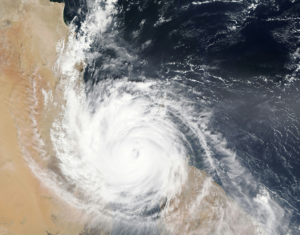Precision agriculture takes centre stage as the drone industry ascends to new heights
The global drone industry has been growing exponentially in recent years, far beyond its traditional military market, and has attracted hundreds of millions in venture capital funding in the process. In 2015 alone the sector attracted $373 million in venture capital investment, a 5 fold increase from $67 million back in 2014.
DJI and 3D Robotics first popularized the technology by providing aerial film capturing drones for amateur film makers and hobbyists. These companies have established the technology as a new consumer electronics category and have been enjoying growing adoption. In 2014 DJI claimed to have reached $500 million in sales, with estimates saying it would double it in 2015.
As the sector matures the technology is expanding into much larger industrial applications. A report by WinterGreen Research estimates that the Unmanned Aerial Systems (UAS) market will be worth more than $4 Billion by 2021 with oil and gas mapping, utility line inspection, package delivery, and agriculture accounting for virtually all of the units sold. Many drone developers are claiming that their technology can drastically reduce the environmental and resource footprint in these huge global industries.
Together with this shift towards commercial drone applications, we have seen a parallel dramatic shift in Corporate Venture Capital investment in Drone companies in 2015 in comparison with the 2 previous years.
The Association for Unmanned Vehicle Systems International (AUVSI) has released a report analyzing the original 1,000 permits showing that many of them are intended for use in resource intense industries including agriculture (164 permits); construction (134 permits); utility inspection (78 permits) and environmental uses (61 permits).
Big players are moving away from hobbyist film making
Agriculture is considered to be one of the biggest industries that drone companies can move into and many are developing specialized drones for the industry. There are a variety of ways that the technology can be used to meet a farmers needs and efforts have mostly concentrated in fast and efficient field data collection and precision pesticide spraying.
DJI is arguably the biggest player in the drone market receiving a post-money valuation of $10 billion back in June of 2015 after receiving $75 million in growth equity from Accel Partners. The company is known for its user friendly film capturing drones such as the market defining DJI Phantom but it has recently announced the availability of a new series of agriculture focused drones named the DJI Agras MG-1. The Agras is an eight-rotor drone capable of carrying more than 10Kg of liquid for precision crop-spraying while being able to cover between 7 to 10 acres per hour, which according to DJI is about 40 times more efficient than manual spraying.
Another popular commercial drone manufacturer currently setting its sights on agriculture is 3D Robotics. It is currently testing both multi-rotor and fixed wing drones that will provide farmers with up-to date field information in a quick and efficient way, helping them make more informed decisions in critical situations.
New Players are finding opportunities in the agricultural sector
As the drone manufacturing sector matures we are starting to see newly established companies deviating from traditional practices and moving towards more specialized business models. These startups are developing data manipulation software and data collecting hardware that focus on the various niches that drones are expected to fill over the next few years, with agriculture expected to be one of the largest.
Companies such as PrecisionHawk are developing drone technologies that would allow organizations from a variety of sectors such as agriculture and insurance to collect and analyze terrestrial data in a complete package. The company is not just developing drones but proprietary AI that would allow its vehicles to detect weather conditions and calculate optimal flight paths. The North Carolina based startup has received over $10 million in venture capital investment since 2010 when it was founded.
IntelinAir is a California based startup focused on more efficient aerial data analysis and collection. The company was founded in 2015 and has already collected $1.5 million in seed funding. In May it announced the launch of its Unmanned Aerial System Technology by the name of SafeSmart. The system utilizes advanced mathematical algorithms to enable drones to have a smooth and predictable autonomous flight even during unforeseen disturbances such as high winds, precipitation and cold weather. The company’s solution also provides customers with actionable data and is focusing on the agriculture market as well as solutions for automatically monitoring energy assets such as wind turbines.
Founded in 2012, HoneyComb is an Oregon based company that provides both drone hardware and software solutions for agriculture in a complete package. The company’s AgDrone UAS and its extensive lineup of cameras, sensors, analytics and mobile controllers can collect and manipulate a wide variety of field data that includes crop stress, irrigation issues, planning and damage assessment. The company gathered a total of $900,000 in seed funding back in January of this year.
A growing need for precision agriculture.
As the world’s population continues to grow, the international agricultural sector is faced with an increased need for higher productivity while utilizing the same land. This in combination with the ever growing symptoms of climate change will ultimately lead to a higher need for food security. Precision agriculture technologies such as drones can provide the crucial data and technologies that will allow farmers and the world to face these increasingly sizeable challenges head-on.



